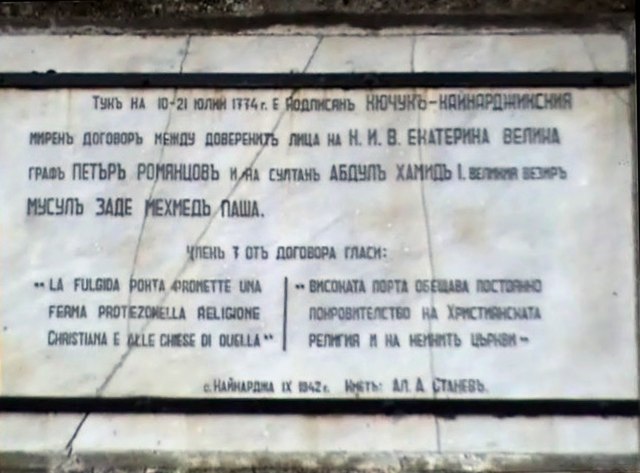The caliphate of the Ottoman Empire was the claim of the heads of the Turkish Ottoman dynasty to be the caliphs of Islam in the late medieval and early modern era. During the period of Ottoman expansion, Ottoman rulers claimed caliphal authority after the conquest of Mamluk Egypt by sultan Selim I in 1517 and the abolition of the Mamluk-controlled Abbasid Caliphate. This left Selim as the Defender of the Holy Cities of Mecca and Medina and strengthened the Ottoman claim to leadership in the Muslim world.
The Battle of Marj Dabiq between the Ottoman and Mamluk armies
Commemorative plaque where the Treaty of Küçük Kaynarca was signed
Abdulmejid II, the last Ottoman caliph
A caliphate or khilāfah is an institution or public office under the leadership of an Islamic steward with the title of caliph, a person considered a political-religious successor to the Islamic prophet Muhammad and a leader of the entire Muslim world (ummah). Historically, the caliphates were polities based on Islam which developed into multi-ethnic trans-national empires. During the medieval period, three major caliphates succeeded each other: the Rashidun Caliphate (632–661), the Umayyad Caliphate (661–750), and the Abbasid Caliphate (750–1517). In the fourth major caliphate, the Ottoman Caliphate, the rulers of the Ottoman Empire claimed caliphal authority from 1517 until the caliphate was formally abolished as part of the 1924 secularisation of Turkey. Throughout the history of Islam, a few other Muslim states, almost all of which were hereditary monarchies such as the Mamluk Sultanate and Ayyubid Sultanate, have claimed to be caliphates.
Mustansiriya Madrasah in Baghdad
Abdulmejid II, the last caliph of Sunni Islam from the Ottoman dynasty, with his daughter Dürrüşehvar Sultan
Official portrait of Abdulmejid II as caliph
Hafiz Muhiuddin Aurangzeb, unlike his predecessors, was considered to be a caliph of India.







